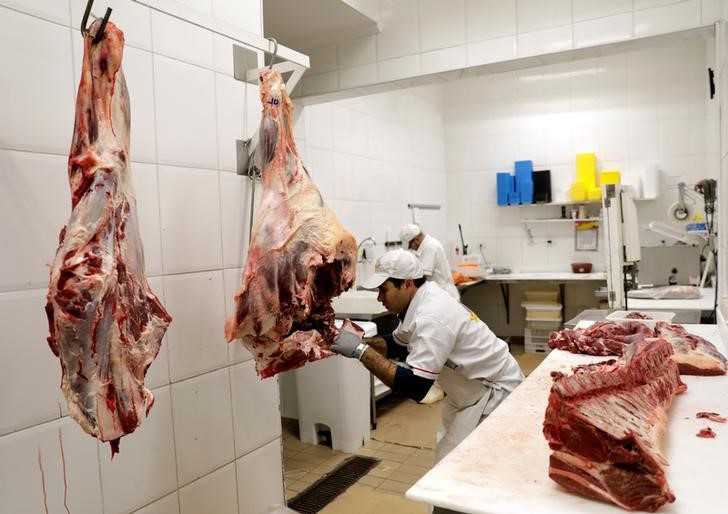(Bloomberg) -- Cold and stale air conditions allowed coronavirus particles to jump more than 8 meters (26 feet) at a German slaughterhouse, a study showed, giving an insight into how meat plants turned into hotspots for infections across the world.
Researchers reconstructed the likely cause of the outbreak at a Toennies Group slaughterhouse in Rheda-Wiedenbrueck, where about 1,500 workers contracted the virus. Similar conditions at plants globally are a reason they’ve become virus epicenters, according to the report from groups including the Helmholtz Center for Infection Research.
Meat plants from the U.S. to the U.K. and South America have seen the rapid spread of the virus, infecting thousands of employees who often work in close proximity on processing lines. Dozens of workers have died, and labor advocates have said that a lack of social distancing could continue to put people at risk. Outbreaks also forced American meat plants to close earlier this year, sparking some protein shortages.
Meanwhile, China is ramping up testing of imports of cold food for the virus. Even as global scientific experts say that the likelihood of transmission through food is extremely low, the Asian country has slapped export bans on some abattoirs with cases, further fueling the urgency to contain the disease.
The Toennies outbreak likely began from one employee in May and was largely transmitted in the plant’s dismantling area, where rooms are often chilled to 10C degrees (50 Fahrenheit). Chilly air circulated without frequent changes -- coupled with a strenuous work conditions -- helped particles move large distances, said Adam Grundhoff, a co-author of the study.
“It is very likely that these factors generally play a crucial role in the global outbreaks in meat or fish processing plants,” said Grundhoff, a research group leader at the Heinrich Pette Institute, Leibniz Institute for Experimental Virology. Under these conditions, a distance of 1.5 to 3 meters between workers isn’t sufficient to prevent transmission, he said.
The Toennies plant -- Germany’s largest pork abattoir -- reopened last week after a month-long closure and plans to gradually ramp up output. The company, which posted a link to the research report on Twitter, also recently released a 25-point plan detailing measures it’s making to prevent further outbreaks. They include testing employees twice a week, hiring workers directly and overhauling ventilation.
The report’s findings show that no factory worldwide was built for such a crisis, and the company has invested in air filters and other mechanisms to protect employees, a Toennies spokesman said by email.
Housing conditions -- also often pinpointed as a factor in the outbreaks -- were not found to play a significant role in the disease’s initial spread.
“The important question now is under what conditions transmission events over longer distances are possible in other areas of life,” said Melanie Brinkmann, a research group leader at the Helmholtz center.
©2020 Bloomberg L.P.

